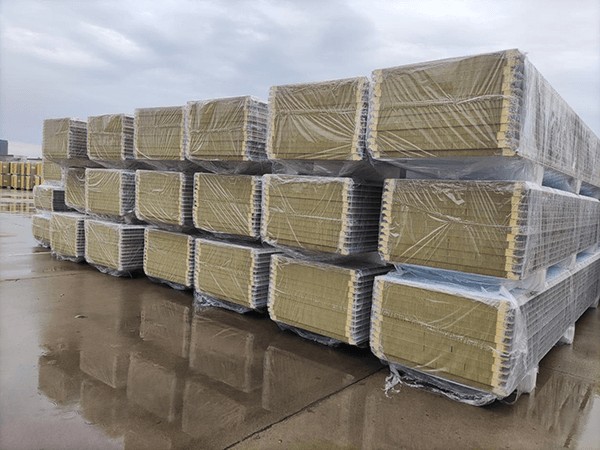News
Engineers, contractors, architects, and building owners are under more pressure than ever to construct buildings that are energy-efficient, safe, and sustainable.
This, alongside an emphasis on speed of construction, can prove a significant challenge.

Sandwich panels that integrate our stone wool core material can play their part in improving insulation in the most important areas.
They’re suitable for insulating ceilings, interior and exterior walls (including partition walls and facades), and roofs – as well as for firewall applications. When installed, stone wool insulation harnesses the 7 Strengths of Stone2, offering:
Increased fire protection – stone wool core insulation integrates non-combustible properties to sandwich panels, delivering the highest fire classification A1.
Acoustic capabilities – blocking unwanted noise from attached or neighboring buildings.
Thermal performance – temperatures are better regulated in buildings, thanks to the smart fiber structure of stone wool insulation.
A bespoke solution – products are manufactured in advanced plants, ensuring a customized product for your sandwich panel process.
Once sandwich panels with a stone wool core have been installed, buildings and complexes can enjoy increased energy efficiency, thanks to improved thermal regulation.
By raising the energy efficiency with stone wool insulation, savings are then passed on to the building owner or operator.
Roof solution

Installing effective insulation in homes and commercial properties can reduce cooling requirements by up to 70%.1 As well as the cool air escaping, there’s the chance that hot air can also enter through a roof that isn’t in good shape.
In hot climates, keeping a building cool is essential.
Insulation helps to maintain the building’s correct temperature, so you can get creative with the results. Turn a loft area into a living space or an extra bedroom, or turn a flat roof into a welcoming terrace or green roof.
Insulating a flat or pitched roof can help:
Prevent heat transfer
Increase the energy efficiency of a property
Save money on cooling bills
Reduce the carbon footprint of a property
Improve summer comfort
Serviceability
Damping of rain noise
External wall insulation

Outside walls are where thermal transmission most commonly occurs in the majority of buildings.
External wall insulation can significantly moderate this – improving the building’s energy efficiency, as well as cutting CO2 emissions and reducing fuel or cooling costs.
External walls come in different shapes and forms. These range from cavity walls to rendered systems and façade cladding, for domestic, commercial, and industrial buildings. Each type of external wall has its own advantages and disadvantages. They appeal to the building owner in one way or another, by assuring good energy performance that meets local requirements.
Key benefits:
Less thermal transmission
Lower energy bills
Protected building structure
Lower temperature fluctuations
Fewer condensation issues
Better acoustic level
Superior fire protection
Request a Free Estimate
